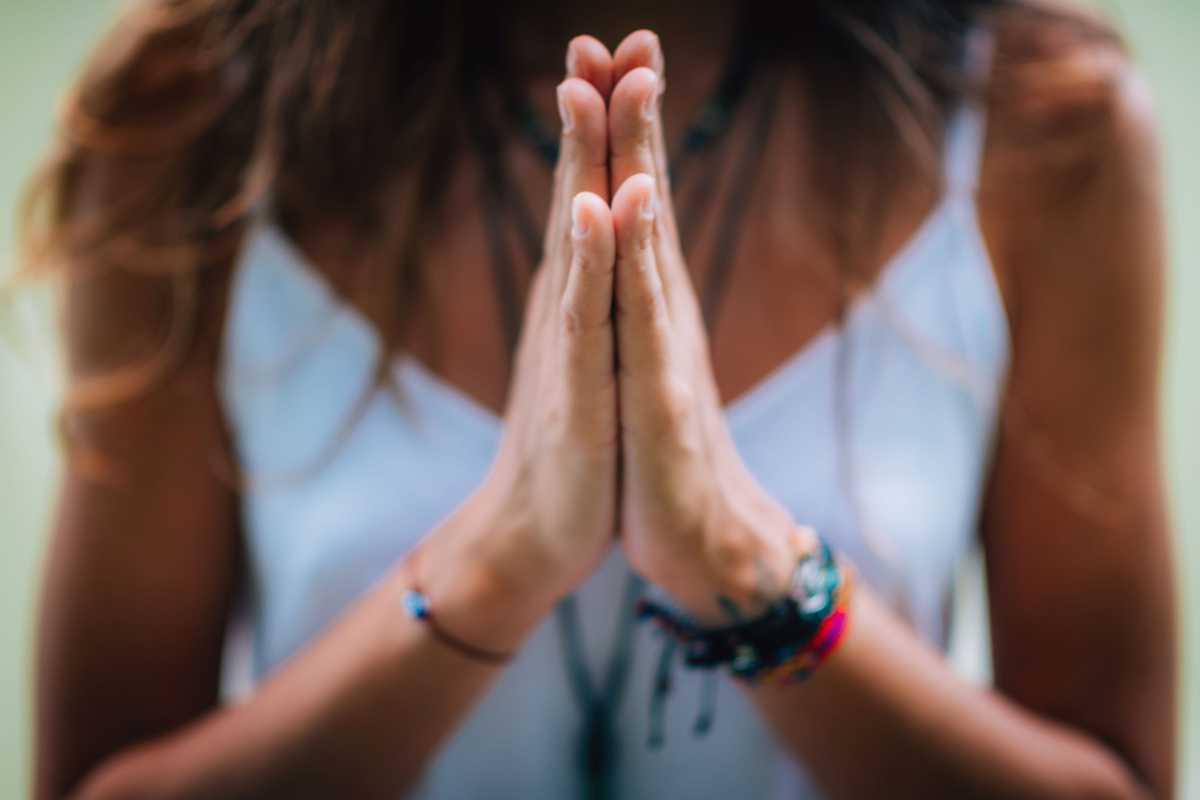How to Meditate
Meditation opens your brain to the freedom of relaxation. By being silent in a peaceful space, you’re able to better train your thoughts to not only focus but find overall peace. This will help you assess your mind and body, improve inner balance and increase calmness.
In addition to boosting mental health, research shows that regular meditation helps relieve anxiety, improve sleep, lower blood pressure and can even reduce common menopausal and irritable bowel syndrome symptoms, too.
When beginning to meditate--for any reason listed above--it's important to know there is no wrong way to get started, but rather, a few things to note.
Meditation includes four simple components: a quiet location with as few distractions as possible; a comfortable place to sit or lay; an attention to focusing; and an open attitude.
Although it may sound simple, meditation is harder than most people think. However, don’t let that stop you! These steps can help guide you through the process. You can also check out our How to Meditate video!
- Take a seat.
Find a place to sit that feels calm and quiet to you. It can be anywhere! Just be sure to take note of what feels most comfortable. You can either sit in a chair with your feet on the floor, on the ground cross-legged or even kneeling. You could consider laying down if that works best as well.
Just make sure you are stable and in a position you can be in for a while.
- Set a time limit.
If you’re just beginning, ease into meditation. Research suggests that simply starting with 5-10 minutes will do the trick.
- Notice your body.
Pay attention to all parts of the body in a gradual sequence starting from your feet and working up to your head. By mentally scanning yourself, you bring awareness to every single limb—noticing any aches, pains, tensions or general discomfort along the way. This allows us to focus on any stress that might be causing irritation and to visualize that tension leaving our body.
- Notice your breath.
Be sure to follow the rhythm of your breath as you inhale and exhale. You can either breathe quickly or slowly. Whatever feels most natural to you.
Beginners might find resting one hand on the belly and the other on the chest helps you pay attention to your breathing.
- Notice when your mind has wandered.
Don’t feel frustrated if you lose focus on your breath and start thinking of other things. Simply return your attention to your breathing and continue.
- Close with kindness.
If your eyes are closed, open them gently and take a moment to notice any sounds or movement. Notice how your body feels and any thoughts or emotions that may have appeared throughout your session.
Getting into the groove of mediation can take a while. Don’t feel discouraged if your first or second session isn’t exactly what you expected. Training the mind to release your thoughts requires practice! Take your time, allow yourself room to learn and grow, and, most importantly, relax.
Go to this list of videos to ease into meditation. Or, if you would like sounds without wording, listen here.
--
Guided meditation is not a substitute for appropriate medical attention.
The phrases within this video are for educational purposes only and are not intended as a substitute for professional medical advice. Do not use the audio to diagnose, treat, cure or prevent any known, or unknown, diseases or illnesses. Please consult with your trusted healthcare professional if any concerns arise.


